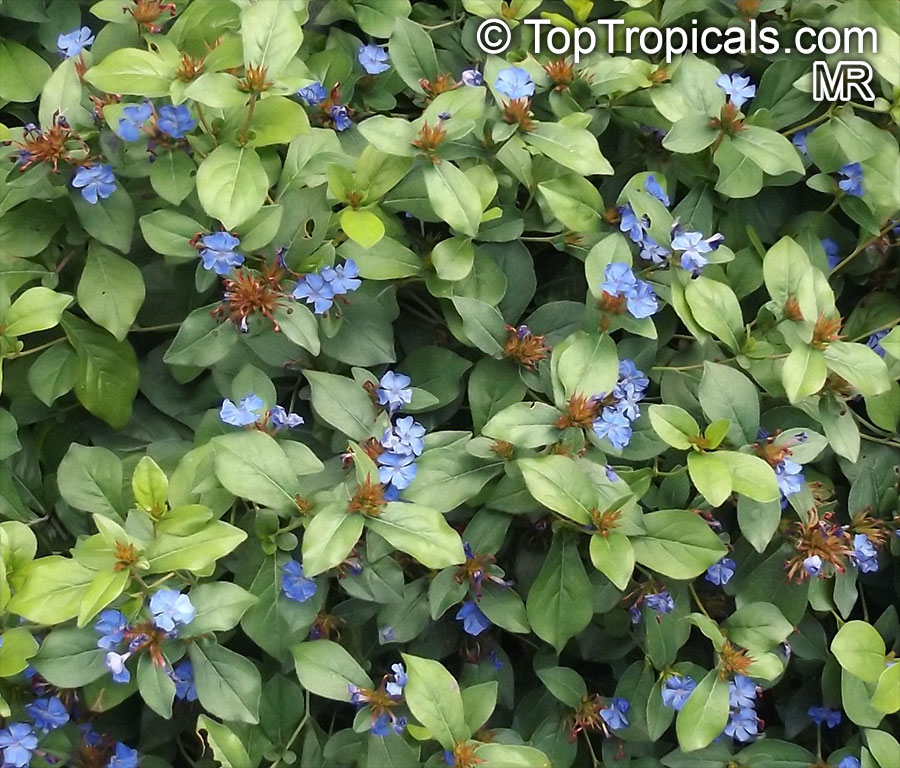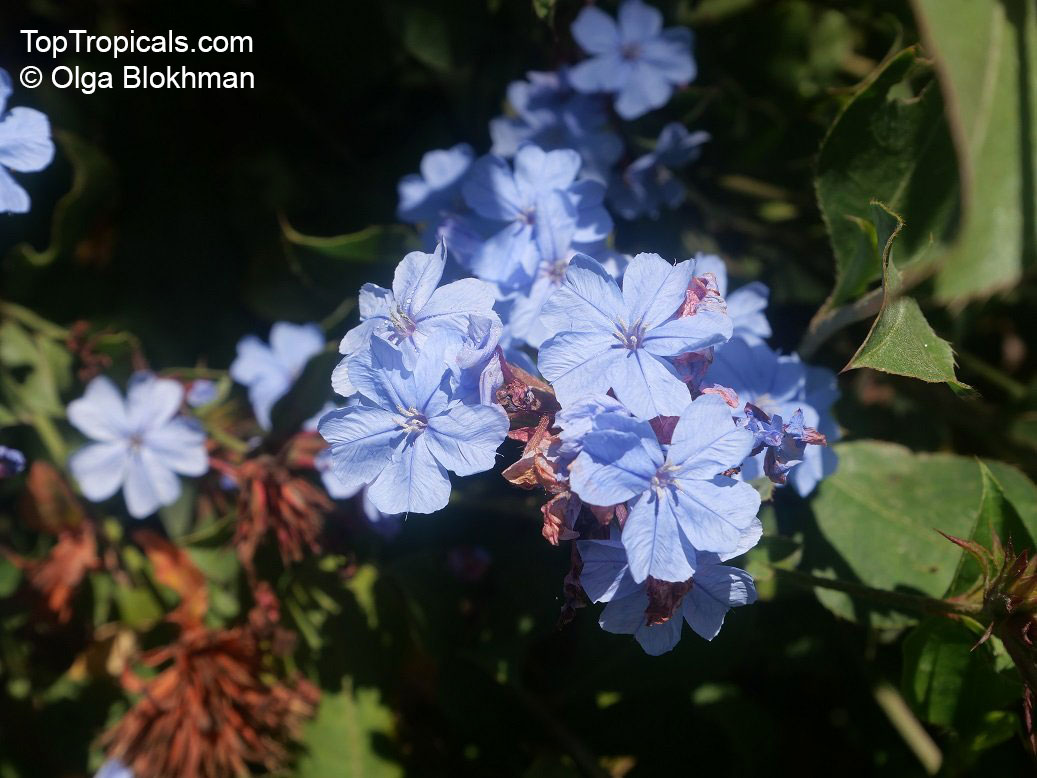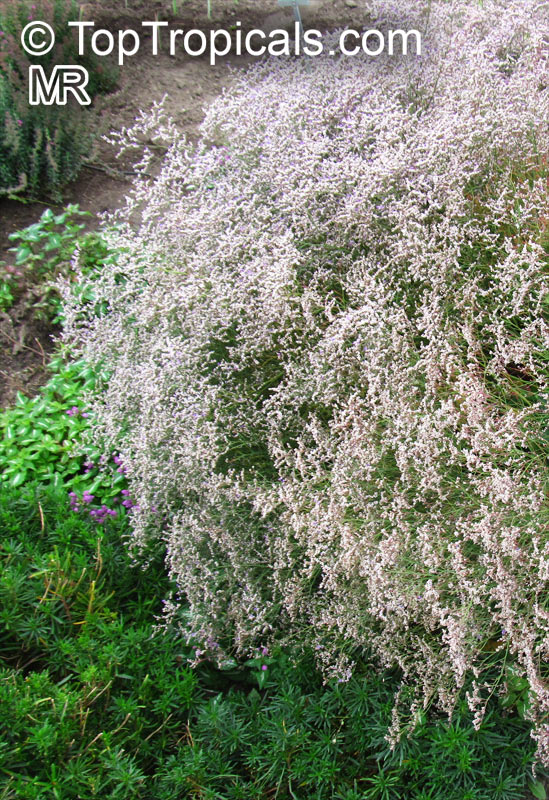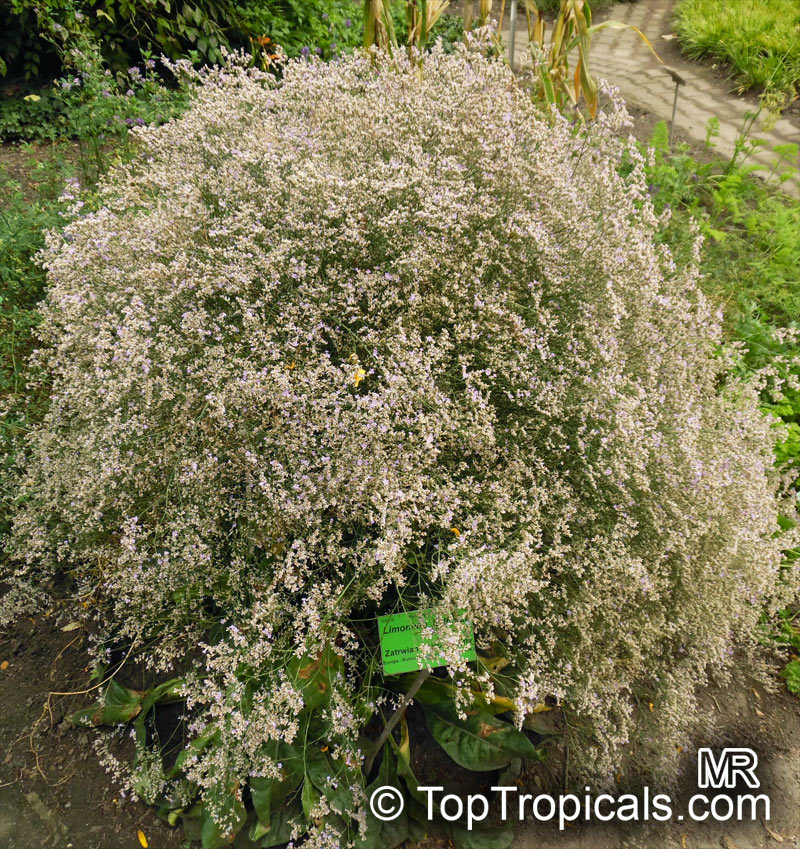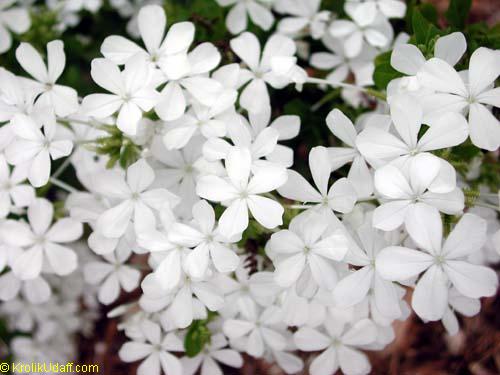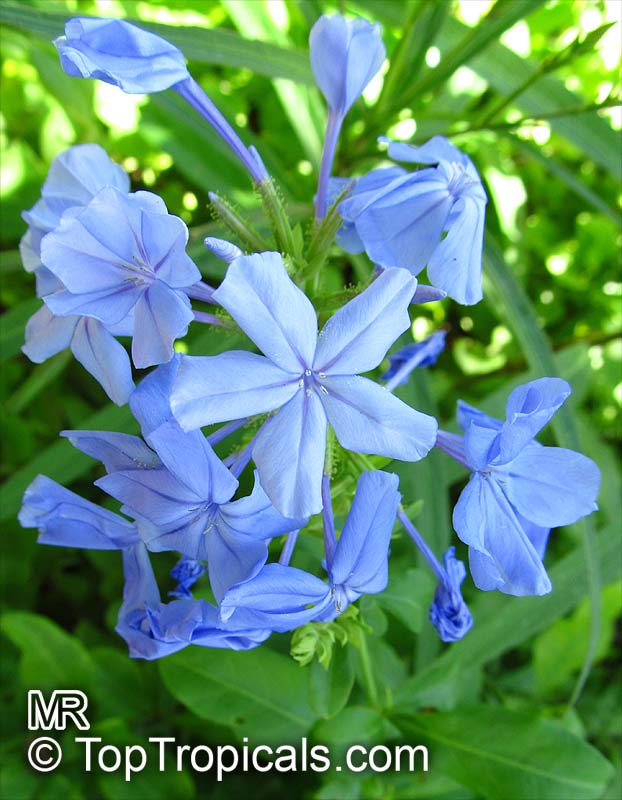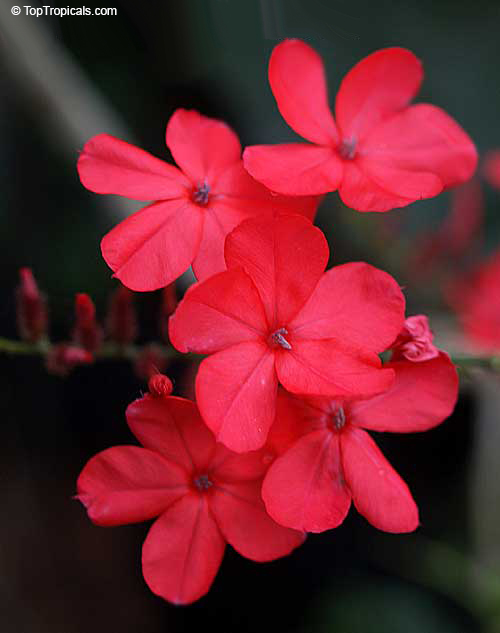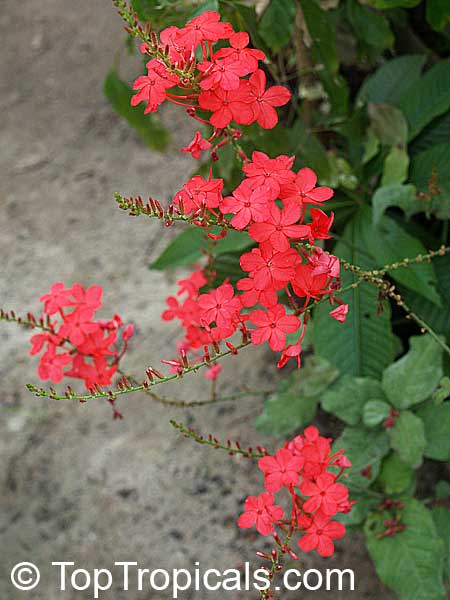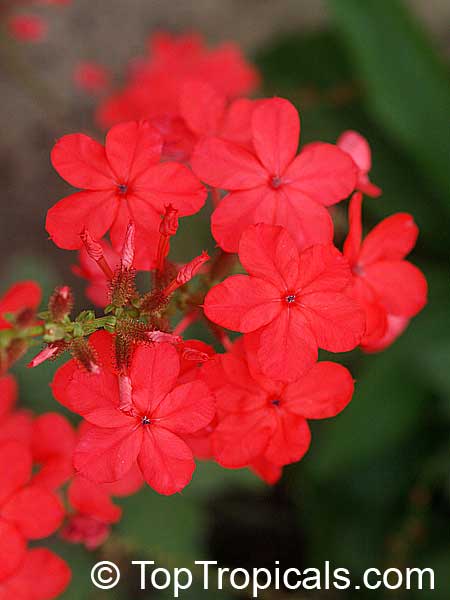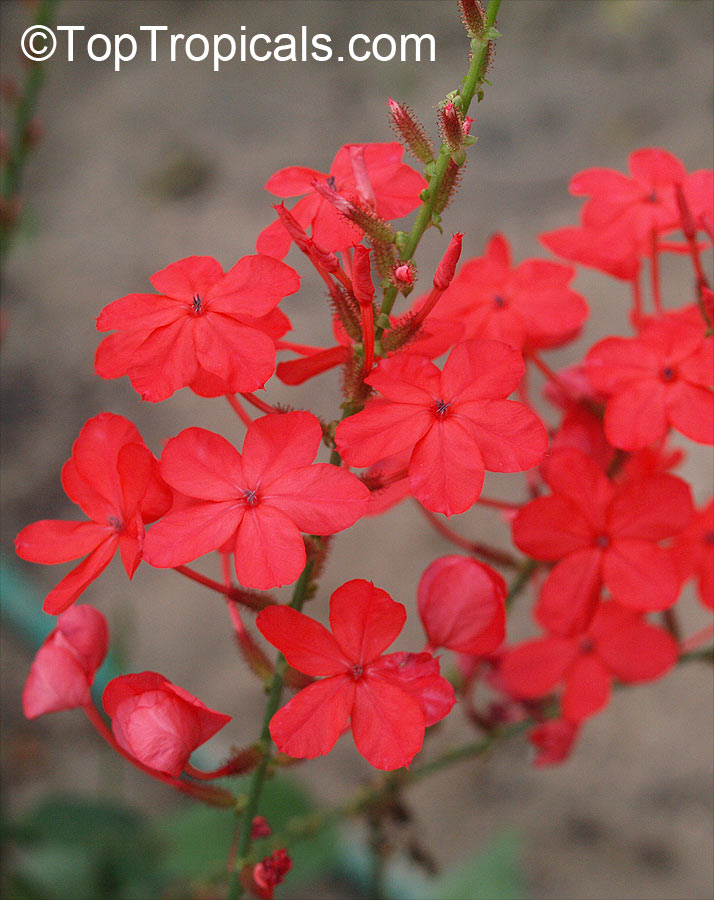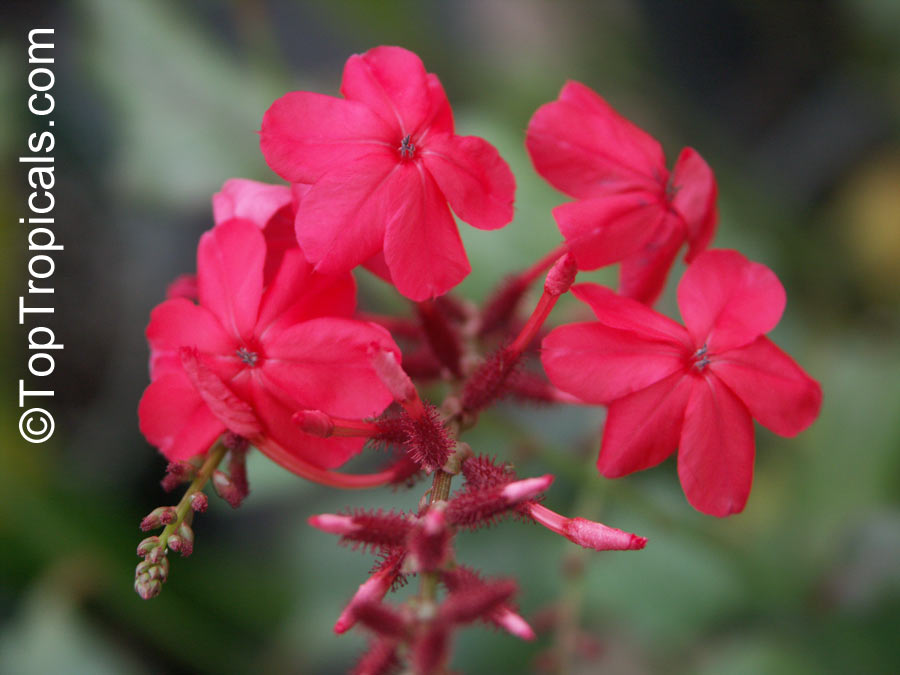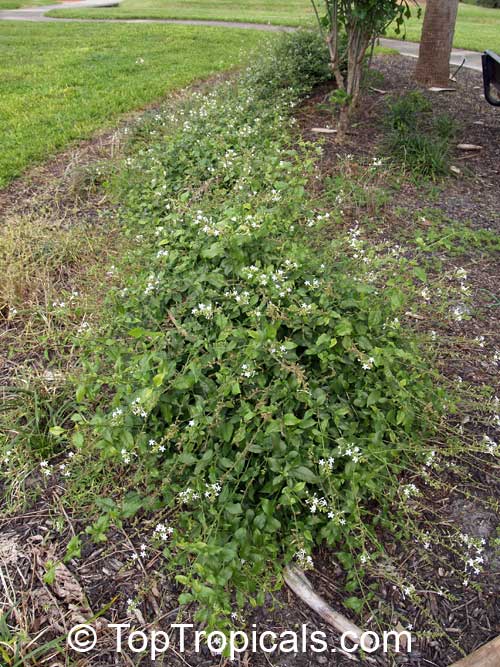Plumbaginaceae - Botanical Family
| Number of plants found: 7 |
Botanical name: Ceratostigma sp.
Common names: Blue Leadwood, Dwarf Plumbago, Leadwort
Family: Plumbaginaceae
Origin: China







Herbaceous semi-evergreen perennial. Dwarf Plumbago has a beautiful bronze-red fall color, which contrasts beautifully with the sky blue flowers. It makes a good ground cover in rocky areas in full sun.
Botanical name: Limonium sp.
Common names: Sea-lavender, Statice, Marsh-rosemary
Family: Plumbaginaceae









Limonium sp. or Sea Lavender flowers come in a variety of colors ranging from pink, white, off-white, blue, lavender, purple, red, crimson, vinous to yellow and orange.
Plants are small shrubs, only two to five feet in height. They thrive in full sun or semi-shade and require moderate watering. Limonium sp. are usually grown in USDA Zones 3-9. They can also be grown in a pot.
The flowers of Limonium sp. are made of four petals, which form a cross. The main inflorescence is composed of many small flowers. Although the flowers are delicate, they are very long-lasting once cut, which makes it a very attractive choice for floral arrangements.
Caring for this plant is relatively easy. In the garden, it should be planted in soil that drains well, as it should not be overwatered. If placed in a pot, it is best to use a potting mix with good drainage.
Fertilizer should be given on an as-needed basis. The most important aspect of fertilizer is ensuring it is well balanced, as this will help the plant grow and blossom. Pruning is also recommended to remove dead flowers and branches and stimulate new growth.
Limonium sp. is a colorful and resilient flower that makes a wonderful addition to any garden. With proper care, the plant will produce magnificent blooms of various colors.
Botanical name: Plumbago aphylla
Common name: Leafless Leadwort
Family: Plumbaginaceae
Origin: Madagascar







Botanical name: Plumbago auriculata
Common names: Cape Plumbago, Cape Leadwort
Cultivar: 'Alba'
Family: Plumbaginaceae
Origin: S Africa, Himalayas, China.









Blooms throughout the year with denser blooms from March to November. Plumbago is popular in both tropical and sub-tropical gardens because of its delicate flowers. It is by nature a woody climbing shrub - with support it can reach several ft in height - but in the tropics it is seen more often as a low plant used for hedges. It tolerates both drought and poor soil and does best at slightly higher altitudes; heavy rainfall tends to beat down the flowers and leaves. Plumbago does best in full sun and grows best if it is heavily pruned from time to time, even cut back to the ground. Propagation is from green cuttings or by division of older plants.
Learn more about Plumbago: Sky Blue Plumbago in Southern Landscapes.
Botanical names: Plumbago auriculata, Plumbago capensis
Common names: Blue Plumbago, Cape Plumbago, Cape Leadwort
Family: Plumbaginaceae
Origin: S. Africa, Himalayas, China









Plumbago auriculata, commonly known as Blue Plumbago, is native to South Africa, the Himalayas, and China and can be found in tropical and sub-tropical gardens where it is used to create beautiful hedges or low shrubs due to its ability to withstand a variety of conditions. It grows best in full sun and reaches a height of 5-10 feet, however when planted in less sunny climates it can be kept as a semi-shrubby evergreen and kept at a height of 2-5 feet.
Plumbago can handle drought and poor soil conditions, but in areas with heavy rainfall its foliage and flowers may become crushed so it's best suited to slightly higher altitudes. Pruning is key to its success as it needs to be cut back to the ground at least once a year to maintain its healthy growth. Propagation is done through green cuttings or dividing of its roots.
Not only are the delicate lavender-purple or blue flowers of Plumbago aesthetically pleasing but it offers a wide range of benefits for pollinators like hummingbirds, butterflies, and beneficial insects. Additionally, it is known for its salt-tolerance, making it an excellent choice for seaside gardens.
For gardeners living in cooler climates, Plumbago is easily kept inside in a container as it is a suitable houseplant. For best results, keep the soil moist and make sure the container is appropriately aerated. During colder months, bring the container inside and place it in the sunniest window in the home. Additionally, be sure to check up on the soil periodically as it can be overly saturated during the spring or overly dry during winter. Give your plant the occasional fertilizing session to keep it healthy and well-nourished.
Botanical names: Plumbago indica, Plumbago Rosea
Common names: Rose-colored Lead-wort, Chitrakmool, Chekkikotuveri, Chitraka, Shitrapuni, Scarlett Leadwort, Whorled plantain
Family: Plumbaginaceae
Origin: India










A pretty subscandent perennial shrub with semi-woody striate stems and flexible branches; leaves simple, alternate, oblong, short-cuneate at the base passing into a very short amplexicaul, exauriculate, reddish periole; flowers bright red, in long terminal spikes. Root contains Plumbagin, sitosteraol glocoside. Root is said to increase the digestive power and promote appetite.
Learn more about Plumbago: Sky Blue Plumbago in Southern Landscapes.
Botanical name: Plumbago zeylanica
Common name: Wild Plumbago
Family: Plumbaginaceae
Origin: SE Asia










Plumbago zeylanica, also known as the Wild Plumbago, is a small shrub that grows 2-5 ft tall and wide. Known for its creamy white or off-white flowers, it's often used to attract butterflies and hummingbirds. Cultivated Plumbago can thrive in full sun, semi-shade, or even in the shade while requiring a moderate water level, but can dry conditions efficiently. It's hardy in USDA Zone 9-11.
When grown in cold regions, Plumbago zeylanica is best grown in a pot to ensure frost protection. This small shrub should be watered moderately, but can endure dry conditions and requires full sun for optimal growth and performance. Additionally, the plant should be trimmed to the desired shape and size. During the colder months of the year, it's important to provide protection for the root system to prevent it from freezing. Plumbago zeylanica is known to be disease and pest-free, making it a great choice for any gardener.
. Plumbago zeylanica is said to stimulate the central nervous system and increase the digestive power.
Use link to repeat this search:
https://toptropicals.com/cgi-bin/garden_catalog/cat.cgi?search_op=and&keyword_op=and&language=e&family=Plumbaginaceae
&number=10&no_change_lang=1&user=tt&sale=1&first=0

